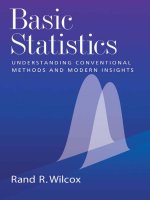- Trang chủ >>
- Khoa Học Tự Nhiên >>
- Vật lý
predicative possession jul 2009
Bạn đang xem bản rút gọn của tài liệu. Xem và tải ngay bản đầy đủ của tài liệu tại đây (4.09 MB, 831 trang )
Predicative Possession
OXFORD STUDIES IN TYPOLOGY AND LINGUISTIC THEORY
general editors: Ronnie Cann, University of Edinburgh, William Croft, University of New
Mexico, Martin Haspelmath, Max Planck Institute for Evolutionary Anthropology; Nicholas Evans,
University of Melbourne, Anna Siewierska, University of Lancaster.
published
ClassiWers: A Typology of Noun Categorization Devices
Alexandra Y. Aikhenvald
Auxiliary Verb Constructions
Gregory D. S. Anderson
Pronouns
D. N. S. Bhat
Subordination
Sonia Cristofaro
The Paradigmatic Structure of Person Marking
Michael Cysouw
IndeWnite Pronouns
Martin Haspelmath
Anaphora
Yan Huang
The Emergence of Distinctive Features
JeV Mielke
Applicative Constructions
David Peterson
Copulas
Regina Pustet
The Noun Phrase
Jan RijkhoV
Intransitive Predication
Leon Stassen
Predicative Possession
Leon Stassen
Co-Compounds and Natural Coordination
Bernhard Walchli
published in association with the se ries
The World Atlas of Language Structures
edited by Martin Haspelmath, Matthew Dryer, Bernard Comrie, and David Gil
in preparation
Imperatives and Commands
Alexandra Y. Aikhenvald
Reciprocals
Nicholas Evans
Reference in Discourse
Andrej A. Kibrik
Sign Languages
Ulrike Zeshan
Predicative Possession
LEON STASSEN
1
3
Great Clarendon Street, Oxford ox2 6dp
Oxford University Press is a department of the University of Oxford.
It furthers the University’s objective of excellence in research, scholarship,
and education by publishing worldwide in
Oxford New York
Auckland Cape Town Dar es Salaam Hong Kong Karachi
Kuala Lumpur Madrid Melbourne Mexico City Nairobi
New Delhi Shanghai Taipei Toronto
With oYces in
Argentina Austria Brazil Chile Czech Republic France Greece
Guatemala Hungary Italy Japan Poland Portugal Singapore
South Korea Switzerland Thailand Turkey Ukraine Vietnam
Oxford is a registered trade mark of Oxford University Press
in the UK and in certain other countries
Published in the United States
by Oxford University Press Inc., New York
q Leon Stassen 2009
The moral rights of the author have been asserted
Database right Oxford University Press (maker)
First published 2009
All rights reserved. No part of this publication may be reproduced,
stored in a retrieval system, or transmitted, in any form or by any means,
without the prior permission in writing of Oxford University Press,
or as expressly permitted by law, or under terms agreed with the appropriate
reprographics rights organization. Enquiries concerning reproduction
outside the scope of the above should be sent to the Rights Department,
Oxford University Press, at the address above
You must not circulate this book in any other binding or cover
and you must impose the same condition on any acquirer
British Library Cataloguing in Publication Data
Data available
Library of Congress Cataloging in Publication Data
Data available
Typeset by SPI Publisher Services, Pondicherry, India
Printed in Great Britain
on acid free paper by
CPI Antony Rowe, Chippenham, Wiltshire
ISBN 978 0 19 921165 4
13579108642
To John W. M. Verhaar
(1925–2001)
in memoriam
This page intentionally left blank
Contents
Acknowledgements xi
List of Abbreviations xiii
Part I. The Typology of Predicative Possession 1
1 The domain of the inquiry 3
1.1 Introduction
3
1.2 Previous work 4
1.3 The semantics of possession: two parameters 10
1.4 The cognitive space of possession: subdomains 15
1.5 Formal restrictions on the domain 25
1.5.1 Predicative and attributive possession 26
1.5.2 DeWnite and indeWnite possession 28
1.5.3 Other formal restrictions 30
1.6 The deWnition of the domain 35
1.7 The sample 35
1.8 Outline of this book 36
2 Four basic types of predicative possession 38
2.1 Methodological issues 38
2.1.1 Ty pes of criteria 38
2.1.2 Weighing of criteria 40
2.1.3 Diachronic factors 42
2.1.4 Double options 45
2.2 The deWnition of the criterion 48
2.3 The Locational Possessive 48
2.4 The With-Possessive 54
2.5 The Topic Possessive 57
2.6 The Have-Possessive 62
2.7 Conclusion 69
3 Non-standard variants 70
3.1 Introduction 70
3.2 Possessor indexing on the possessee 70
3.3 Zero-encoding 79
3.4 Conjunctional Possessives 89
3.5 Clausal Possessives 94
3.6 Topic-Locational hybrids 96
4 Adnominalization 107
4.1 Introduction 107
4.2 Constituency in the Adnominal Possessive 113
4.3 The origin of genitival markers 122
4.4 Conclusion 135
5 Predicativization 137
5.1 Introduction 137
5.2 Predicativization of With-Possessives 137
5.2.1 The copular variant 143
5.2.2 The Xexional variant 164
5.3 Predicativization of other types? 189
5.3.1 Tupian 192
5.3.2 Algonquian 202
5.3.3 Conclusion 206
6 Transitivization 208
6.1 Introduction 208
6.2 Have-Drift from With-Possessives 209
6.3 Have-Drift from Topic Possessives 219
6.4 Have-Drift from Locational Possessives 230
6.5 Why Have-Drift? 239
7 Summary of Part I 244
7.1 Basic features of the typology 244
7.2 Areal distribution of the types 245
Part II. Determinant Factors 249
8 In search of determinant factors 251
8.1 Introduction 251
8.2 Temporal sequencing 255
8.2.1 DeWnition of the domain 255
8.2.2 Balanced versus deranked encoding 256
8.2.3 Variation in deranked predicate encoding 256
8.3 Nonverbal predication: the split/share parameter 265
8.3.1 DeWnition of the notion 265
viii Contents
8.3.2 Variation in split-languages 267
8.3.3 Variation in shared encoding 269
8.3.4 Multiple conWgurations 271
8.4 The universals of predicative possession encoding 274
9 Locational Possessives 277
9.1 Introduction 277
9.2 Indo-European 277
9.3 Languages of the Caucasus 287
9.4 Uralic 296
9.5 Altaic 299
9.6 Other languages of Siberia 306
9.7 Munda and Dravidian 311
9.8 Tibeto-Burman 316
9.9 Middle East and North Africa 321
9.10 Other African languages 327
9.11 Indian and PaciWc Ocean 334
9.12 North and Central America 340
9.13 South America 344
9.14 Conclusion 354
10 With-Possessives 356
10.1 Introduction 356
10.2 North-east Siberia 357
10.3 North America 360
10.4 Central America 376
10.5 South America 383
10.6 Austronesian and Papuan 394
10.7 Australia 407
10.8 Africa 415
10.9 Austro-Asiatic 428
10.10 Conclusion 430
11 Topic Possessives 431
11.1 Introduction 431
11.2 East and south-east Asia 432
11.3 Austronesian 453
11.4 New Guinea and Northern Australia 475
11.5 North America 488
11.6 Central America 512
11.7 South America 530
Contents ix
11.9 Conclusion 559
12 Have-Possessives 560
12.1 Introduction 560
12.2 Indo-European 560
12.3 Further Eurasia 582
12.4 Austronesian and Papuan 587
12.5 Australian 596
12.6 North America 606
12.7 Central America 619
12.8 South America 634
12.9 Khoisan 655
12.10 Afro-Asiatic 657
12.11 Nilo-Saharan 663
12.12 Niger-Kordofanian 678
12.13 Creoles 692
12.14 Conclusion 695
Part III. A Model of Predicative Possession Encoding 697
13 A model of predicative possession encoding 699
13.1 Introduction 699
13.2 Preliminaries 700
13.3 The underlying structure of predicative possession 705
13.4 Deranking languages 706
13.5 Balancing languages 710
13.6 Potential ambiguity and the Have-Possessive 717
13.7 Conclusion 723
Appendix A Alphabetical listing of the sample 725
Appendix B Typological stratiWcation of the sample 748
References 769
Index of Languages 803
Index of Subjects 811
x Contents
Acknowledgements
Work on this book took its Wrst concrete form in 1998, during a summer
school of the Deutsche Gesellschaft fu
¨
r Sprachwissenschaft (DGfS). Thanks to
the truly fabulous audience assembled there, the course I taught in Mainz was
probably the best teaching experience I have ever had, and it persuaded me to
develop my vague and half-baked ideas on predicative possession into some-
thing that might safely be exposed. Matters came to a Wnal formulation in a
second summer school, this time sponsored by the Dutch Organisation of
Linguists (LOT), in Leuven in 2007. In between these landmarks predicative
possession took me to Konstanz, Stockholm, Helsinki, Bremen, Utrecht,
Pavia, Leipzig, Bern, and Copenhagen. I want to thank the hosts and the
audiences in these lovely places for their hospitality and attention, and
I apologize for the confusion which my talks must have generated from
time to time. During the academic year 2004–2005 I was relieved from my
teaching duties by a grant from the Dutch Organisation for ScientiWcRe-
search (NWO), which is hereby gratefully acknowledged.
One can not survive a project that takes the best part of ten years to
complete without the help, interest, support, and simple kind words from
caring colleagues. Much as I shudder at the thought of leaving somebody
unnamed, I feel I should explicitly direct my gratitude towards Dik Bakker,
Bernard Comrie, Grev Corbett, Mily Crevels, Bill Croft, Michael Cysouw,
Matthew Dryer, Ad Foolen, Martin Haspelmath, Masha Koptjevskaja-Tamm,
Floor Loeb, Lena Maslova, Edith Moravcsik, Pieter Muysken, A
˚
shild Naess,
Frans Plank, Paolo Ramat, Keren Rice, Franc¸oise Rose, Anna Siewierska,
Thomas and Christel Stolz, Sandra Thompson, and Johan Van De Auwera.
I want to reserve a special salute for Bernhard Wa
¨
lchli, who ruined his 2006
summer vacation on behalf of my manuscript, Marianne Mithun, who is a
priceless and inexhaustible fountain of wisdom on all matters North Ameri-
can, and Sonia Cristofaro, who provided insightful comments at the last stage
of the manuscript. John Davey and Julia Steer of Oxford University Press
never really gave up on me, and I applaud them for their encouragement,
indulgence, and the precious quality of staying polite. Bernd Heine’s Posses-
sion (1997) has been a continuous source of inspiration throughout my
investigation, even though my analyses and conclusions may not always be
in line with the proposals put forward in that work. Finally, at the risk of
stating the obvious, I must take oV my hat to all the descriptive grammarians
who, in often troublesome circumstances, continue to ensure that linguistics
can be a science that actually has a subject.
As a very wise man once said: ‘‘Typology is a lonely job, but somebody has
to do it.’’ Fortunately, I did not have to be lonesome. I thank my brothers
Huub and Jan for their friendship and good cheer. And above all this book is
for Trudy, and – in roughly chronological order – for Mickey, Panda, Lizzy,
Grover, Woody, Wanda, Lassie, Bessy, and Nada, who have always known how
to make a person feel wanted, at home, and secure.
xii Acknowledgements
List of Abbreviations
In the glosses of the example sentences the following abbreviations have been used:
1, 2, 3, 4 person
I, II, III, . . . nominal class
ABL ablative case
ABS absolutive case
ACC accusative case
ACCIDENTAL accidental mood
ACT actor
ACTUAL actual mood
ADESS adessive case
ADJ adjective marker
ADV adverbial marker
AFF aYx
AFFIRM aYrmative mood
AG agent
AL alienable possession
marker
ALL allative
AN animate gender
ANT anterior verb
form
AOR aorist
ARG argumentative case
ART article
ASP aspect marker
ASS assertive mood
ASSOC associative case
ATEL atelic marker
ATTR attributive marker
AUX auxiliar y
BEN benefactive marker
CAUS causative marker
CAUSAL marker of causal
mood
CISLOC cislocative marker
CLASS nominal class marker
CLITIC clitic
COINC marker of
coincidental form
COLL collective marker
COM comitative marker
COMPLET completive aspect
CONC concord marker
CONCESS marker of concessive
mood
COND marker of
conditional mood
CONJ conjunction
CONJUNCT marker of conjunct
form
CONN connective
CONS consecutive marker
CONSEC marker of
consecutive mood
CONSTR marker of construct
form
CONT continuative aspect
CONTEMP marker of
contemporativ e mood
CONTRAST contrastive marker
CONV converb marker
COP copula
CUSTOM customary aspect
DAT dative case
DEAG deagentive voice
DECL declarative mood
DEF deWniteness marker
DEFIN deWnitive
DEIC deictic element
DEM demonstrative
DEP dependent verb form
DERIV derivation marker
DESID desiderative mood
DEST destinative case
DET determiner
DIM diminutive
DIR directive marker
DIST distal marker
DISTR distributive marker
DS diVerent subject
marker
DU dual number
DUB dubitative mood
DUPLIC duplicative marker
DUR durative aspect
DYN dynamic verb form
ELAT elative case
EMP emphatic marker
EPENT epenthetic element
EPISTEMIC epistemic mood
ERG ergative case
ESS essive marker
EVID evidential marker
EXCL exclusive (1st person)
EXCLAM exclamative marker
EXPER experiential mood
F feminine gender
FACT factitive mood
FIN Wnite verb form
FOC focus marker
FREQ frequentative marker
FRUST frustrative mood
FUT future
GEN genitive case
GENERAL general aspect
GER gerund marker
HAB habitual aspect
HON honoriWc form
HORT hortative mood
HSY hearsay form
HUM human gender
HYP hypothetical mood
ILL illative case
IMMED immediate past
IMM. FUT immediate future
IMP imperative mood
IMPERF imperfective aspect
INAN inanimate gender
INCEP inceptive aspect
INCH inchoative aspect
INCL inclusive (Wrst
person)
INCOMPL incompletive aspect
INDEF indeWnite marker
INDIC indicative mood
INDIR indirective marker
INESS inessive case
xiv Abbreviations
INF inWnitive marker
INFER inferential mood
INSTR instrumental case
INTENS intensive aspect
INTR intransitive marker
IRR irrealis marker
ITER iterative marker
IZAF izafet marker
JUSS jussive mood
LIM limitative marker
LK linking morpheme
LOC locative case
M masculine gender
MED middle voice marker
MEDIT meditative case
MODALIS modalis case
MOOD mood marker
MOT motion marker
NARR narrative mood
NEAR nearness marker
NEG negative item
NEUT neuter gender
NEUTR neutral aspect
NEWSIT marker of new
situation
NMNL nominalizer
NOM nominative case
NON3 non third person
NONFACT non factitive mood
NONFEM non feminine gender
NONFIN non Wnite verb form
NONFUT non future tense
NONHUM non human gender
NONHYP non hypothetical
mood
NONPAST non past tense
NONSG non singular number
NONTOP marker of non topic
NOUNAG marker of agent
noun
OBJ object marker
OBL oblique case
OBV obviative marker
OLD.INFORM marker of old
information
OPT optative mood
PART partitive case
PARTICIP marker of participial
mood
PASS passive marker
PAST past tense
PAT patient marker
PAUC paucal number
PAUS pausal marker
PCP participle
PERF perfect form
PERFORM performative marker
PERL perlative case
PERS persistive aspect
PERV pervasive marker
PFV perfective aspect
PL plural number
PLPERF pluperfect
POSS possessive marker
POT marker of potential
mood
PRED predicate marker
PREF preWx
Abbreviations xv
PREP preposition
PRES present tense
PRESUPP presuppositive
PRET preterite tense
PROB probability marker
PROG progressive aspect
PROLAT prolative case
PRON pronoun
PROP proprietive marker
PROSEC prosecutive case
PROX proximate marker
PRT particle
PUNCT punctual aspect
PURP purposive marker
Q question marker
QUOT quotative marker
REAL realis mood
REC recent past
RECIP reciprocal marker
REDUPL reduplication
REFL reXexive marker
REL relative mood
REM remote past
REP reported speech
REPET repetitive aspect
RESULT resultative aspect
RM relative marker
SEQ sequential marker
SG singular number
SIM simultaneity marker
SIT situational aspect
SOC sociative case
SPEC speciWcity marker
SS same subject
marker
STAT stative aspect
STEM stem formative
STYLE stylistic marker
SUBJ subject marker
SUBJUNCT marker of
subjunctive mood
SUBLAT sublative case
SUBORD subordination
marker
SUBSEC marker of
subsecutive mood
SUFF suYx
SUG marker of suggestive
mood
TEL telic aspect
TEMP marker of temporal
mood
TERMIN terminative case
THEME theme
TNS tense marker
TOD.PAST marker of today past
tense
TOP topic
TR transitivizer
TRANS transitivity marker
TRANSLAT translative case
TRI trial number
UNCERT marker of uncertain
mood
xvi Abbreviations
UNPOSS marker of non
possessed noun
UNSPEC unspeciWcity marker
USIT usitative aspect
VAL validator
VENT ventitive
marker
VERB verbalizing
morpheme
VN verbal noun
VOICE voice marker
Abbreviations xvii
This page intentionally left blank
Part I
The Typology of Predicative
Possession
This page intentionally left blank
1
The domain of the inquiry
1.1 Introduction
This book is an essay in theoretical linguistics, and employs the research
method of linguistic typology. This form of linguistic inquiry aims at dis-
covering basic principles in the structure of human language, by means of a
comparison of structural features in a large sample of (preferably unrelated)
languages. Typologists expect that in doing so the limits of possible variation
between languages – and hence, a deWnition of the notion ‘possible human
language’ – can be brought to light.1 The current project is intended to
contribute to this general programme, in that it examines one speciWc struc-
tural feature of languages, namely the various ways in which the concept of
predicative possession can be formally realized.
Given the particular, broad-scale nature of a typological investigation, it
will be clear that such a project will face a number of methodological
problems that are absent, or at least less pressing, in other forms of linguistic
research. A major problem, with which any typological project will be con-
fronted at its very outset, concerns the question of cross-linguistic identiWca-
tion. It is, of course, of the utmost importance that the data base upon which
the typological project is founded be as uniform and homogeneous as pos-
sible, so that the researcher will not compare incomparable cross-linguistic
data. This, however, presupposes that the researcher has a working hypothesis
about what constitutes relevant (and irrelevant) data in each of the languages
in the sample. In other words, the researcher will need a deWnition of the
domain of inquiry, to be formulated in such a way that it can be applied
language-independently. In recent linguistic typology, it is generally agreed
that such a language-independent deWnition of a typological domain can not
(or not entirely) be phrased in terms of formal or ‘structural’ criteria.
Typologists nowadays favour domain deWnitions in which structural
1 Textbooks that provide general introductions to the main concepts and research results of
linguistic typology are Comrie (1989), Whaley (1997), Song (2001), Haspelmath et al. (2001), and
Croft (2003).
criteria are ‘mixed’ with criteria of a semantic (or ‘cognitive’, or ‘functional’)
nature.2 A common practice, which I will adopt in this study, is to deWne the
domain Wrst in terms of a range of semantic phenomena, and then to use
formal criteria to limit the domain to a set of constructions that is cross-
linguistically manageable.
In the remainder of this chapter, my main concern will be to provide such a
deWnition for the domain of predicative possession. After a cursory survey of
previous literature in Section 1.2, in section 1.3 I will attempt a semantic/
cognitive analysis of ‘alienable’ possession, which is seen by many authors as
the prototypical manifestation of the concept of possession. In section 1.4,I
will argue that the concept of possession must in fact be viewed as deWning a
conceptual space, in which at least four diVerent subdomains or subtypes of
‘possession’ can be distinguished. In addition to these semantic consider-
ations, in Section 1.5 I will indicate and motivate a number of formal restric-
tions, which are meant to delineate the empirical domain of this study further,
beyond the purely semantic de W nition. The Wnal outcome is a cross-linguis-
tically applicable deWnition of the notion ‘predicative possession construction’,
which will be given in Section 1.6, and which will be employed as the basis for
the typological investigations reported in Chapters 2–7. The chapter is con-
cluded by a discussion of the method of language sampling that is used in this
study (Section 1.7) and a short outline of the rest of this book (Section 1 .8).
1.2 Previous work
Whatever the merits of this book may be, it can not be said to be pioneering.
The concept of possession, and the ways in which natural languages formally
encode this concept, are the subject of a rich and sophisticated body of
linguistic literature, of which I have made extensive use. First and foremost,
there is a wealth of monographs and grammars in which the possessive
constructions of single languages or groups of languages are described.
These descriptive Wndings will of course be acknowledged at their appropriate
places in the following chapters. As for the more theoretically oriented
literature on possession, a number of di Verent issues can be discerned, each
with their own history and tradition.
To start, I will brieXy touch upon a few questions that will not be pursued
further in this book, but which are too interesting or important to be ignored
2 For a defence of the semantic/cognitive grounding of typologies see, among others, Stassen (1985),
Comrie (1989), and Croft (2003). Haspelmath (1997: 9) argues, quite convincingly in my view, that
domain deWnitions should consist of a mix of semantic and formal criteria.
4 The typology of predicative possession
completely. First, I must mention a considerable body of research which deals
with the question of the relationship between the concept of possession and
other conceptual notions. Authors have asked themselves whether possession
constitutes an independent conceptual domain, or whether, alternatively, it
can be reduced to some other, more basic, conceptual notion. In particular, it
has been suggested that possession is in fact a subdomain of the domain of
location. I will comment on this question in the next section. For now, I can
say that I agree with Heine (1997: 202–7), who states that possession is
conceptually linked to location, but that the two domains should nevertheless
be kept apart. Another way in which possession is connected to other
conceptual domains is that, apparently, the encoding of possession is a
favourite source in languages for the encoding of other conceptual notions.
These connections have been explored in a captivating strand of literature,
which is par t of grammaticalization theory, a fairly recent development in
diachronic linguistics.3 Thus, it has been established that, in quite a few
languages, possessive constructions form the diachronic basis for aspectual
notions such as perfective or progressive, or for expressions of deontic
modality. The following few examples may serve as an indication of the
diachronic relationships involved:
(1)French (Indo-European, Romance)
a. Possession:
Il a un cheval
he has a horse
‘He has a horse’ (own data)
b. Perfective:
Il a travaille
´
he has worked
‘He has worked’ (own data)
3 The term ‘grammaticalization’ originally referred to a rather speciWc type of diachronic change in
languages, namely, the process by which lexical items can change into functional items or further on
into grammatical aYxes. Well known examples of such a process are the development of nouns (like
‘back’ or ‘front’) into adpositions (‘behind’ or ‘before’) and the development of adpositions into
inXectional aYxes on nouns. In recent years, however, there has been a tendency to broaden the sense
of the term, and to use it to refer to any type of diachronic change: ‘Grammaticalization theory is
concerned with the genesis and development of grammatical forms. Its primary goal is to describe how
grammatical forms and constructions arise and develop through space and time’ (Heine and Kuteva
2002: 2).
Publications which document the development of grammaticalization theory over the last thirty
years are Lehmann (1982, 1995), Traugott and Heine (1991), Heine et al. (1991), Pagliuca (1994), Hopper
and Traugott (2003), Gildea (2000), Heine and Kuteva (2002), Fischer et al. (2004), and Bisang et al.
(2004).
The domain of the inquiry 5
(2)Swahili (Niger-Kordofanian, East Bantu)
a. Possession:
Wa-na pesa
they-be.with money
‘They have money’ (Heine 1997: 189)
b. Progressive:
Wa-na-ku-la
they-be.with-inf-eat
‘They are eating’ (Heine 1997: 189)
(3)English (Indo-European, West Germanic)
a. Possession:
I have a motorcycle (own data)
b. Deontic modality:
I have to work (own data)
Moreover, there are a number of languages in which possessive encodings
form the historical foundation of expressions of existence, as is shown in the
following examples from French, Serbo-Croatian, and Swahili:4
(4)French (Indo-European, Romance)
a. Possession:
Il a un cheval
he has a horse
‘He has a horse’ (own data)
b. Existence:
Il y a des gens qui fument
it there has indef people who smoke
‘There are people who smoke’ (own data)
(5)Serbo-Croatian (Indo-European, South Slavonic)
a. Possession:
Gospodin Petrovic ima automobil
Mr. P. has car
‘Mr. Petrovic has a car’ (Javarek and Sudjic 1963: 18)
b. Existence:
U Beogradu ima vojnika
in B loc it.has soldier.acc
‘There are soldiers in Belgrade’ (Lord 1958: 22)
4 Apart from existentials, aspect, and deontic modality, possession has been claimed to be a source
of encoding for several other concepts, such as the marking of conditional clauses and the marking of
future tense. See Heine (1997: 187) and Heine and Kuteva (2002).
6 The typology of predicative possession









